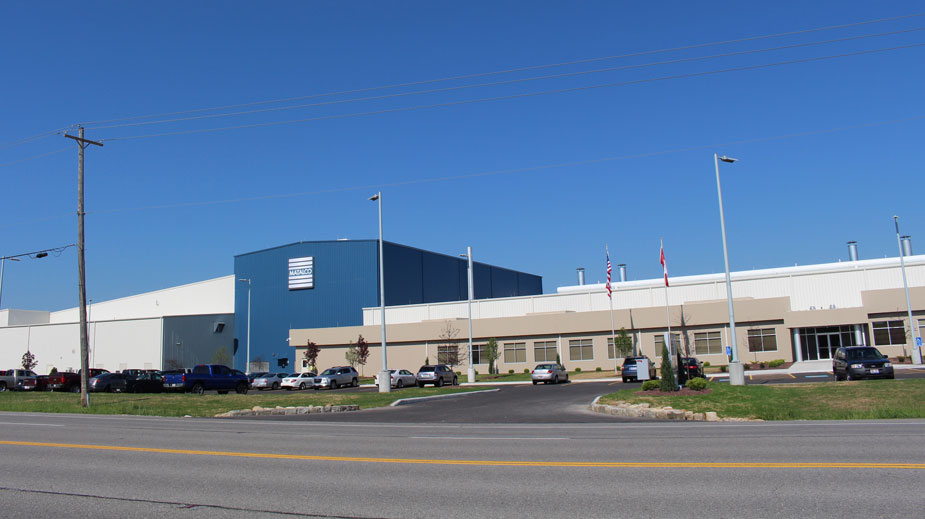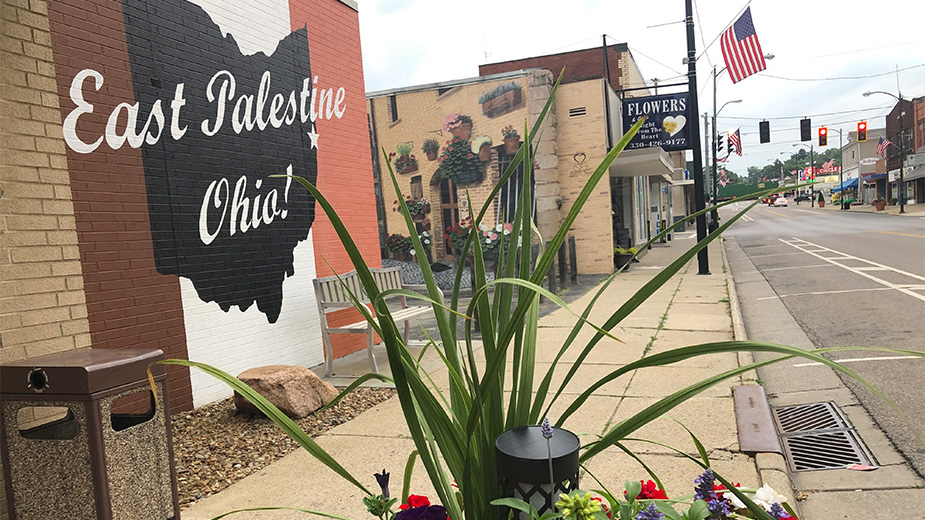‘Surplus Utilities’ Fuel Prosperity in Lordstown
LORDSTOWN, Ohio — You can make the case that the most popular vehicle in Lordstown isn’t the Chevrolet Cruze built at the General Motors plant on the southern edge of the village but the semi-tractor trailer. Scores of them rumble through town every day.
They carry everything from parts for the Cruze to McDonald’s french fries to the equipment needed to build an $899 million power plant. These trucks are a sign of the growing industry in Lordstown. All along state Route 45, the north-south thoroughfare also known as Tod Avenue, industrial companies are moving in and expanding.
On the northern end of the strip, the Ohio Commerce Center, 5232 Tod Ave., Matalco began operating its 225,000-square-foot aluminum billet plant, putting the business park at 80% capacity. That’s according to Dan Crouse, a real estate broker for Routh-Hurlbert, which represents the commerce center.
Inside the Ohio Commerce Center, companies such as R.F. Products, a distributor of accessories for metal frames, are planning expansions and relocations within the park.
“We’re working on another building here that we’re going to move into. It’s a couple buildings over, but it’s twice the size,” says Greg Johnson, president of R.F. Products Corp., 5232 Tod Ave., Suite 19. “This whole space is definitely changing, especially with all the trains that come through here now.”
South of the village center, site preparation is underway for the $899-million Lordstown Energy Center, with a groundbreaking scheduled for today.
Meanwhile, at the GM Lordstown Assembly complex, which recently celebrated its 50th year of operations, 8,500 solar panels – the automaker’s largest array in North America – installed in 2014 provide power for manufacturing the all-new Chevy Cruze. Industrial companies near the GM plant such as Hayes Enterprises, Taylor Steel, Magna Seating and Cassens Transport Co. are also on the rise, says Mayor Arno Hill.
From the viewpoint of the village officeholders, what the trucks rolling off the Ohio Turnpike really bring, Hill says, is “wholehearted financial stability. General Motors could be here another 50 years, we’re hoping. With the power plant stepping in, they take some of the tax burden. It’s a dream come true.”
The industrial base in Lordstown has been a boon for the school district, which has seen funding from the state shrink over the years. Today, only a quarter of the district budget comes from the state, says Superintendent Terry Armstrong.
About $40,000 per year comes from the income tax Anderson-Dubose employees pay. General Motors accounts for 10% of the budget and Clean Energy Future, the company building the Lordstown Energy Center just off Route 45, will contribute $500,000 to the schools annually until the plant opens. Upon opening, the payments will increase, totaling some $18 million over 15 years, says the president of Clean Energy Future LLC, Bill Siderewicz.
“All of this stabilizes our budget and helps us meet the needs of our kids and families,” Armstrong says. “It’s better to have more taxpayers than higher taxes, so I’m glad that we have a situation like this here.”
The impact of the big players in Lordstown reaches into other communities in the Mahoning Valley as well. Just ask Herman Maass.
In 1996, Maass was named plant manager at GM Lordstown. He came into the job knowing he wanted the plant to be more involved in the community, he says, and worked with the Youngstown Warren Regional Chamber to establish a committee that would set regional infrastructure priorities, sharing leadership techniques he learned while working for Saturn and Buick.
“One of the first things I talked about was consensus-building and showing this committee how to do it,” Maass says. “That committee worked pretty well. It led to the [state Route] 711 connector, the airport road, the widening of [state Route] 46 in Austintown, the reconstruction of [Interstates] 76 and 80 to the turnpike, and water and sewer improvements.”
Not all roads lead to Lordstown. So what is it about this village of just under 3,400 people living within 23 square miles that makes it so attractive for industry?
Part of what brought Clean Energy Future to Lordstown, Siderewicz says, is a combination of “the important elements,” the availability of land, access to highways and reliable political leadership. “Lordstown has a lot of important elements,” he says. “And those are all the ingredients you have to have for a happy business environment.”
Crouse observes that many municipalities have access to the same transportation routes and similar sites available. What sets Lordstown apart is a surplus of utilities.
The Ohio Commerce Center has access to water from both the Mahoning Valley Sanitary District, which draws from the Meander Reservoir, and the Warren waterlines. There are three fiber optic data providers in the village and on the northern end of Lordstown is “one of the largest power substations you’ll find in the northeast United States.
“A company like Matalco can come in and choose the water line that has better chemistry for their processes. That’s unheard of,” Crouse says. “These things without a doubt play to companies like Matalco or the Lordstown Energy Center.”
And, Crouse continues, village officials are easy to contact, whether to set up a meeting with a potential company or take care of problems quickly.
“When it comes to the village, you have a mayor who is accessible, whether it’s to me or you or Joe on the street,” Crouse says. “He listens and he is available. It’s beyond being a politician. The whole village is like that.”
Mayor Hill readily acknowleges that General Motors plays a large role in who calls Lordstown home. Companies such as Taylor Steel, Cassens Transport and Magna Seating work with the plant. The assembly plant also gets newcomers to take a look at Lordstown in the first place.
“Because GM is there, we’ve had a lot of businesses look to us,” he says. “There has been a lot of great spinoff.”
Lordstown becoming an industrial hub seems to serve everyone well, says Mike Boddy, general manager of the Anderson-Dubose warehouse at 5300 Tod Ave. While not all companies within the village work with each another, they all play a role in attracting talent.
“Our goal is to find good employees and people may find us if they know what’s going on in Lordstown,” Boddy says. “They may come to Lordstown for a different employer, but they can see us too. And we want to be here long-term, so it’s always good that there’s other industry here, too.”
Hill envisions more growth for Lordstown in both the industrial and commercial sectors. But he also sees a balance that needs to be struck for residents of his community.
“We haven’t grown much in 50 years, so we don’t want to throw it all on the table right now,” he says, explaining that he’d rather the village carefully vet new businesses.
Ultimately, Hill says, Lordstown plays an important role in the Mahoning Valley: job provider. When the steel mills collapsed, GM kept going and today employs 4,500, he notes.
Matalco, which began production earlier this year, employs 40 and could eventually double that number. A June 15 ribbon-cutting is scheduled at the plant. And construction of the Lordstown Energy Center will employ as many as 650 skilled tradesmen.
“We’re providing jobs and this area needs jobs,” Hill says. “That’s what allows us to take care of our residents.”
“OUR TOWNS” Video:
Rural Lordstown Embraces Industry
“3 Minutes With” Village Mayor Arno Hill
Pictured: Matalco’s 225,000-square-foot aluminum billet plant is among the newest additions at the Ohio Commerce Center. The plant currently employs 40 and aims to double that.
Copyright 2024 The Business Journal, Youngstown, Ohio.



